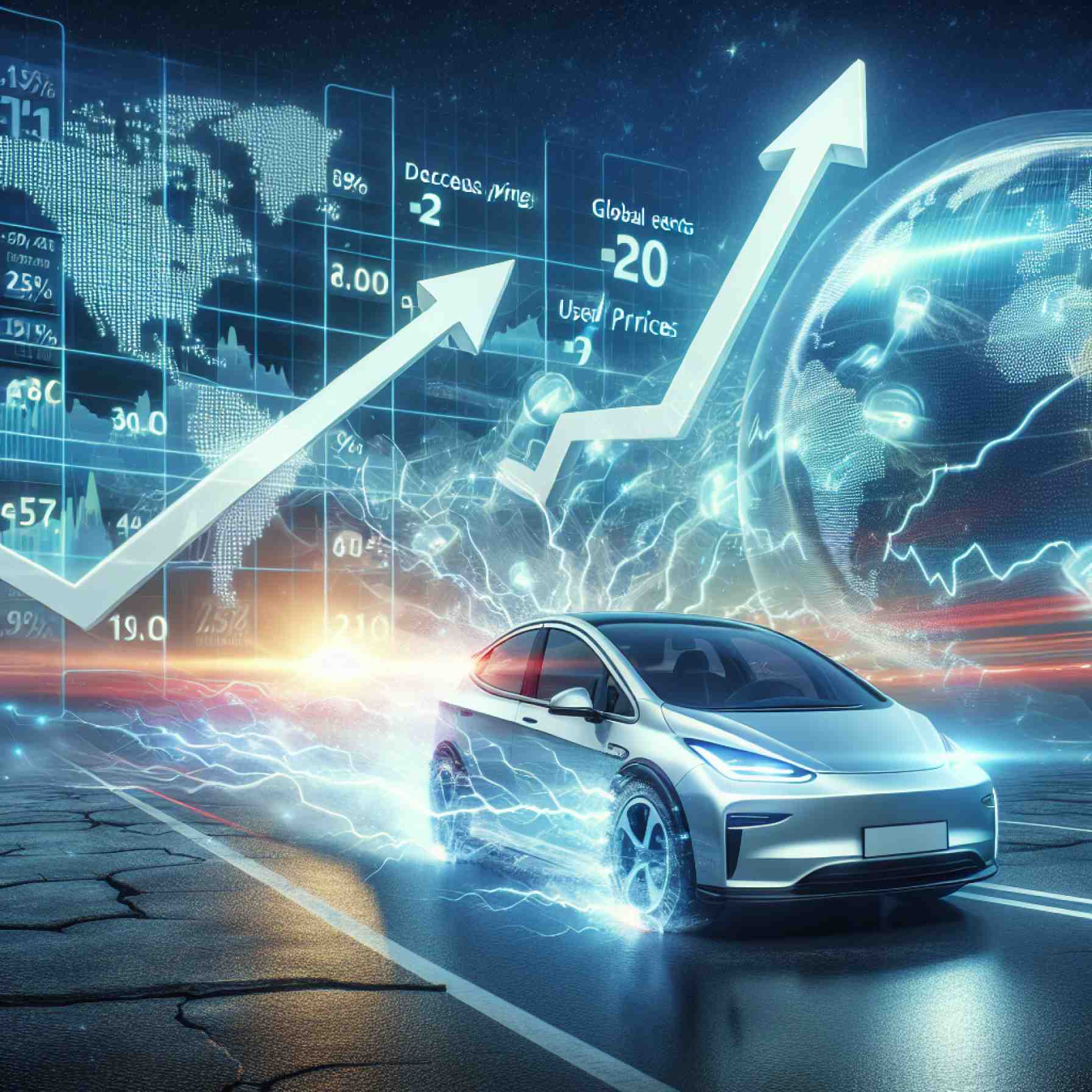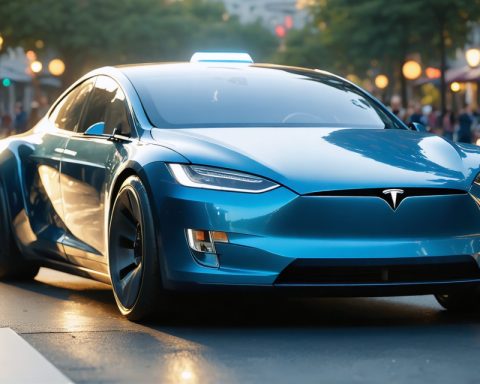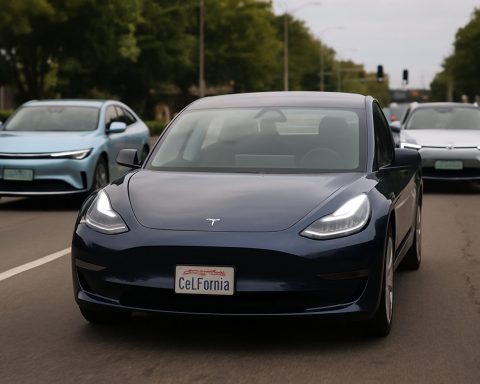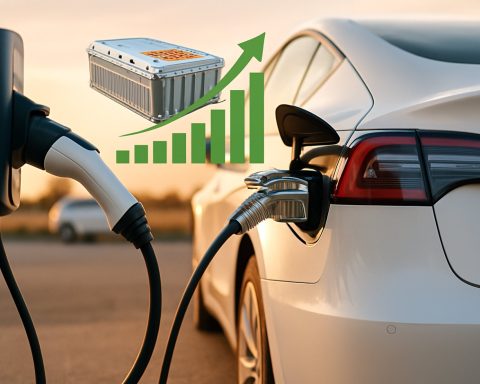- Interest in used electric vehicles (EVs) has surged, nearly doubling in searches over the past three years, driven by economic and geopolitical factors like rising gas prices.
- Used EV prices have dropped over 40%, making them more accessible compared to a 12% decrease for gasoline cars.
- Tesla’s Model 3 and Model Y remain top choices, while Chevrolet Bolt EUV gains popularity for its range and affordability.
- Buyers are increasingly drawn to electric trucks, with the Ford F-150 Lightning and Rivian R1T entering the top ten popular used EVs.
- Traditional brands like Toyota and Honda are being traded in, highlighting a shift toward electrification loyalty.
- The West Coast, particularly Oregon and California, leads EV adoption, with Minnesota emerging as a new contender in the Midwest.
- Lower prices, more model options, and better infrastructure indicate a promising future for EV adoption.
A silent revolution unfolds beneath the steel and concrete of city highways and country roads. Electric vehicles (EVs), humming quietly into our collective consciousness, are now garnering unprecedented interest among used car buyers. CarMax, the giant in the retail of pre-owned vehicles, underscores this shift in its latest study that reveals not just a warm embrace but a full-on sprint towards used EVs.
Over the last three years, the popularity of EV searches on CarMax’s online platform nearly doubled. This surge is not a fleeting digital glitch—it’s driven by key economic and geopolitical events that have reshaped consumer decisions. A seismic geopolitical shift in 2022 woke many consumers up to the possibility of escaping fluctuating gas prices. As gasoline costs soared with the conflict in Ukraine, EV interest surged, demonstrating how quickly awareness can pivot in times of global tension.
Fast forward to 2025, the evidence that once seemed anecdotal now bears the weight of statistics: used EV prices have plummeted by over 40%, starkly juxtaposed with only a 12% price reduction in their fossil-fuel-driven counterparts. This significant devaluation in EV costs brings the electric dream tantalizingly within reach for buyers.
A deeper look at the consumer’s choice on the lot reveals the Tesla Model 3 and Tesla Model Y firmly holding the pole positions. This EV duo’s unyielding popularity is a telling sign of the brand’s staying power. Emerging rapidly behind them is Chevrolet’s Bolt EUV, accelerating to prominence due to its increased range and affordability. Vehicles like the Volkswagen ID.4 and Hyundai Ioniq 5 further highlight a burgeoning diversity in consumer taste—the market appetite is no longer tethered to a single vision of electric future.
Buyers are also shifting their preferences from sedans to robust electric trucks, with the Ford F-150 Lightning and Rivian R1T crashing into the top ten popular used EVs for the first time. It’s a decisive nod to a future where power doesn’t just mean horsepower but encompasses a new way to experience vehicles, with versatility and eco-innovation in tandem.
Sea changes are visible in trading behaviors, too. Traditional automotive giants like Toyota and Honda are the most popular brands being swapped for an electrified alternative, signifying a gradual but certain departure from old loyalties to new value propositions. This shifting allegiance suggests a clear message—while some may trade in their Honda Civic or Toyota Prius for novelty, others foresee a greener future in which an ample EV lineup awaits.
Regionally, the West Coast continues to blaze the trail, with states like Oregon and California maintaining their position at the forefront of this electric shift. Surprisingly, the study spotlights Minnesota’s meteoric rise, jumping several ranks to become a new player in the EV domain, echoing a broader Midwest movement towards electrification.
What does all this mean for the future? A changing landscape reshaped by consumers who vote with their wallets, validating the transition from prediction to reality. Falling prices, a growing choice of models, and improving infrastructure are just the beginning. The electric dream isn’t just alive; it’s charging forward with an ever-increasing momentum, urging more to join this quiet revolution. It’s not merely an environmental imperative but a pragmatic choice that savvy consumers are making today, crafting a greener tomorrow.
Discover the Hidden Trends Driving the Surge in Used Electric Vehicles
Electric vehicles (EVs) are no longer just a buzzword. With their growing popularity in the used car market, they’re factoring heavily in consumer decisions across the globe. Here’s an in-depth look at the factors driving this silent but swift revolution and actionable insights if you’re considering making the switch.
Why Are Used Electric Vehicles Gaining Popularity?
1. Economic Factors: A significant drop in the price of used EVs—over 40% in recent years—compared to a 12% decrease in traditional vehicles. This makes EVs an increasingly attractive option for budget-conscious buyers.
2. Geopolitical Influences: The conflict in Ukraine led to soaring gasoline prices, encouraging a pivot towards vehicles that aren’t reliant on fossil fuels. Many consumers began viewing EVs as a viable hedge against unpredictable gas prices.
3. Diverse Options: The emergence of models like the Chevrolet Bolt EUV, Volkswagen ID.4, and Hyundai Ioniq 5 provides consumers with a broader palette of choices, from luxury to more budget-friendly options.
4. Shifts in Preferences: There’s a growing trend towards electric trucks, exemplified by the popularity of the Ford F-150 Lightning and Rivian R1T.
Features and Innovations
– Tesla Dominance: Tesla’s Model 3 and Model Y remain favorites, thanks to their advanced technology, driving range, and brand prestige.
– Range Improvements: Modern used EVs often boast impressive ranges, addressing one of the principal concerns of previous EV adopters.
Region-Specific Insights
– West Coast Leadership: States like California and Oregon continue to lead in EV adoption, driven by robust infrastructure and incentivizing policies.
– Midwest Surge: Places like Minnesota are becoming unexpected hubs for EV interest, reflecting a broader Midwestern interest in sustainable transport solutions.
Market Trends and Forecasts
– Increasing Infrastructure: The growing framework of charging stations, especially fast chargers, is easing range anxiety and encouraging more consumers to make the switch.
– Policy Support: Look for upcoming tax incentives and rebates for used EV purchases, as governmental bodies aim to boost EV adoption further.
Controversies and Limitations
– Battery Life Concerns: Consider potential battery degradation in older models, which may impact range and efficiency.
– Resale Value: While newer models hold value well, faster technological improvements could potentially affect future resale pricing.
Actionable Recommendations
1. Research Before Purchase: Evaluate the vehicle’s battery health and warranty status.
2. Utilize Incentives: Investigate regional rebates or federal tax credits that might apply to your purchase.
3. Plan Charging Solutions: Identify nearby charging stations and consider installing a home charger for maximum convenience.
This surge in used EV interest is reshaping the automotive landscape, transforming consumer habits and infrastructure alike. For those contemplating the switch, the benefits are abundant, presenting a practical pathway to an eco-friendlier lifestyle.
For more insights into the automotive world, visit CarMax for the latest trends and data.












